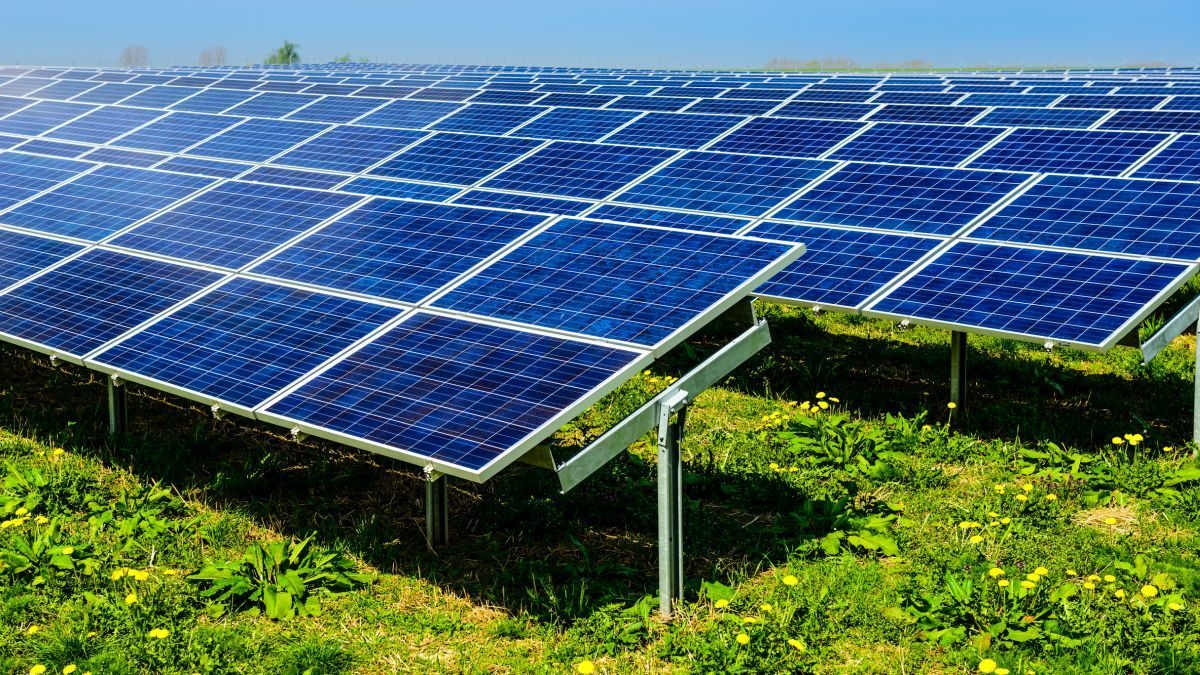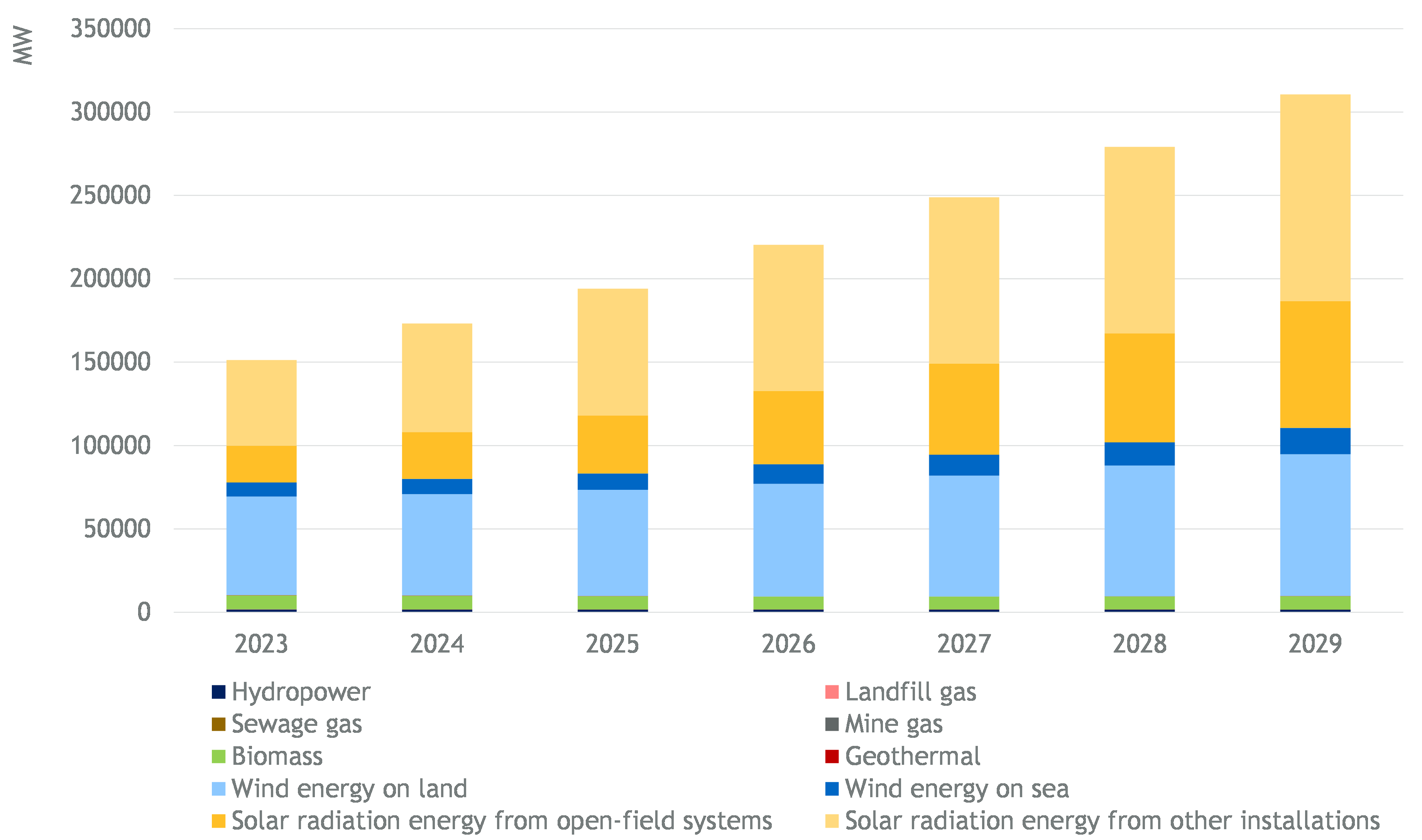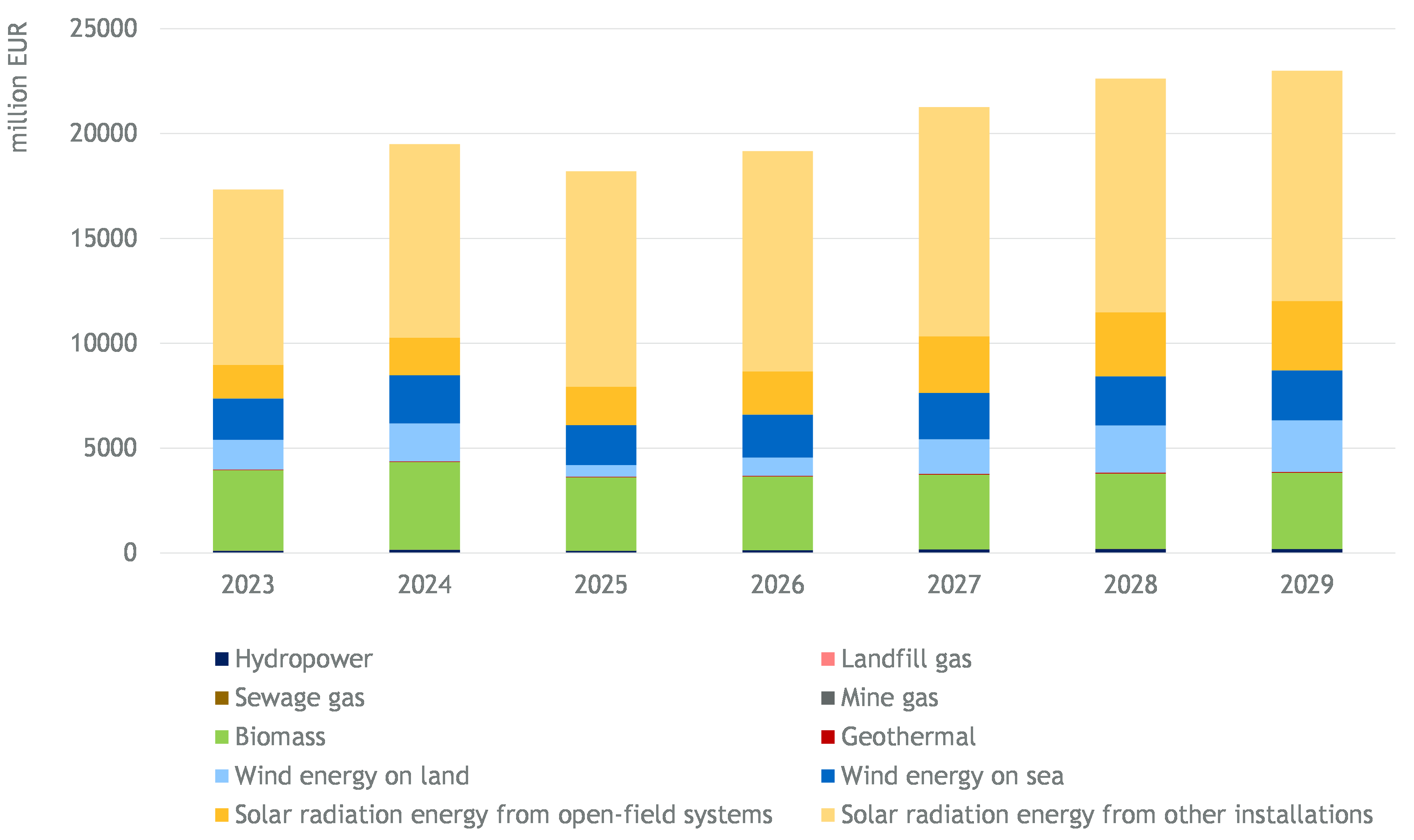
With the addition of new subsidized plants for the conversion of renewable energy sources into electricity, the EEG funding volume could rise to a total of over 18 billion euros for 2025. This would correspond to an increase of almost one billion euros compared to 2023. By the end of 2029, the generation capacity of electricity from renewable energy sources in Germany could then rise to more than 300 GW, roughly double that of 2023. The amount of electricity that these plants would generate under average weather conditions could then amount to around 380 TWh in 2029 (instead of 245 TWh in 2023). The EEG subsidy payments could rise to almost EUR 23 billion in the same period – despite the withdrawal of 22 GW of solar and wind energy plants from the EEG subsidy scheme with high remuneration rates by 2029.
These and other findings are the result of the “Medium-term forecast for Germany-wide electricity generation from EEG-funded power plants for the calendar years 2025 to 2029”, which was prepared by a team from the Institute of Energy Economics at the University of Cologne (EWI) on behalf of the four German transmission system operators. Three different scenarios for the development of installed capacity, annual energy and subsidy payments for the period from 2025 to 2029 were developed for the report. The energy sources examined include plants for generating electricity from wind, solar radiation, hydropower, landfill gas, sewage gas, mine gas, biomass (including biomethane) and geothermal energy. Historical data, current legislation and other current and expected framework conditions were taken into account.
In the scenario with the highest probability of occurrence (trend scenario), the report assumes strong growth in installed capacity. “The strongest growth is assumed for ground-mounted solar installations, whose expected installed capacity could more than triple by the end of 2029 compared to 2023,” says Dr. Fabian Arnold, Project Lead at EWI, who prepared the report together with Hendrik Diers, Martin Lange, Arne Lilienkamp, Nils Namockel, Carina Schmidt, Dr. Philip Schnaars and Erik Schrader. “The main factors for this are falling technology costs and the regulatory framework conditions, which have improved significantly as a result of the Easter and Solar Package I, among other things,” says Arnold. These include higher subsidy rates and tender volumes as well as the reduction of approval and reporting obligations. In contrast, decreasing generation capacities are estimated for the energy sources landfill gas, mine gas and biomass until 2029. The expansion cannot fully compensate for the dismantling of the comparatively old power plant stock of these technologies.

In addition to the assumed increase in the number of installations generating electricity from renewable energy sources, a decline in the expected market values is another important reason for the projected medium-term rise in EEG payments. Plants are increasingly being remunerated through subsidized direct marketing, whereby plant operators are guaranteed a minimum remuneration. “If the market values of the technologies now fall below this state-guaranteed minimum remuneration, this difference is compensated in the form of EEG payments,” says Dr. Philip Schnaars, Head of Research Area at the EWI. “In particular, the market values of solar plants fall in our simulations due to the high simultaneity of their generation. As a result, the subsidy payments via the EEG even increase disproportionately to the expected expansion .”

The EEG medium-term forecast is based on § 74 of the EEG and is published annually by the transmission system operators. With its scenario framework for the future development of the use of renewable energy sources and EEG support payments, the forecast forms a central planning document for EEG financing.
The complete medium-term forecast can be found as well on the joint homepage of the transmission system operators https://www.netztransparenz.de.